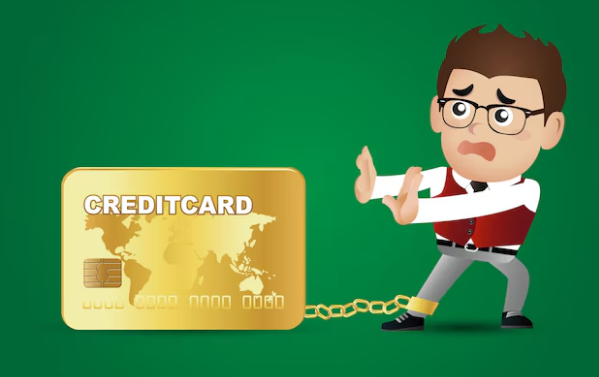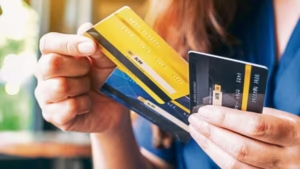How to dispute unauthorized charges on your credit card in the U.S.: A step-by-step guide
Finding an unauthorized charge on your credit card statement can be frustrating and alarming. Whether it’s a billing error, duplicate transaction, or fraudulent purchase, knowing how to dispute these charges effectively is essential to safeguarding your finances.
Fortunately, credit card companies in the U.S. provide consumer protections under federal law. Understanding your rights and taking the right steps can help you resolve billing issues efficiently, prevent future fraud, and maintain control over your financial security.
Understanding your rights when disputing credit card charges

The Fair Credit Billing Act (FCBA) and your protections
The Fair Credit Billing Act (FCBA) grants consumers the right to dispute unauthorized charges, billing errors, and fraudulent transactions. Under this law, you have 60 days from the statement date to report any discrepancies to your credit card issuer.
If the charge qualifies under the FCBA, the credit card company must investigate the claim and resolve the issue within two billing cycles, typically 90 days. During the investigation, they cannot hold you liable for the disputed amount, ensuring your credit score and financial standing remain unaffected.
Types of charges you can dispute
Not all charges qualify for a dispute under the FCBA. However, you can challenge transactions such as unauthorized purchases, incorrect amounts, duplicate charges, and charges for items never received or services not provided.
Fraudulent transactions, often resulting from identity theft or card skimming, should also be reported immediately. Additionally, subscription-based charges that continue after cancellation can be disputed if the company fails to honor your request.
Charges you cannot dispute
Some charges are not eligible for disputes, including transactions resulting from buyer’s remorse. If you regret a purchase but the item was delivered as described, the credit card company is unlikely to intervene.
Likewise, disputes over dissatisfaction with services or products must typically be handled with the merchant before involving the credit card issuer. Understanding these limitations can save time and frustration when filing a claim.
Step-by-step process to dispute unauthorized charges
Reviewing your credit card statement and identifying issues
Start by carefully examining your credit card statement each month to identify unauthorized or incorrect charges. Look for unfamiliar transactions, duplicate charges, or purchases with incorrect amounts.
If you notice a charge you don’t recognize, check receipts, past purchases, and any active subscriptions before assuming fraud. Sometimes, charges appear under different merchant names, making them difficult to identify immediately.
Contacting the merchant first
Before filing a formal dispute, reach out to the merchant directly. Many billing errors, such as accidental duplicate charges, can be resolved faster when handled directly with the business.
When contacting the merchant, provide transaction details, explain the issue clearly, and request a refund or correction. If they refuse to resolve the problem, proceed with filing a dispute with your credit card issuer.
Submitting a dispute to your credit card issuer
If the merchant does not resolve the issue, contact your credit card issuer to file a dispute. Most credit card companies allow disputes to be submitted online, by phone, or through written correspondence.
Provide details such as the transaction date, amount, and reason for the dispute. Include any supporting evidence, such as receipts, emails, or cancellation confirmations, to strengthen your case.
What happens after you file a dispute?
Once you submit a dispute, your credit card issuer will investigate the claim thoroughly and fairly. They may issue a temporary credit for the disputed amount while carefully reviewing the case.
During the investigation, they may request additional documentation to support your claim. The process typically takes 30 to 90 days, depending on the complexity of the dispute and the response from the merchant.
Possible outcomes of a dispute
If the investigation determines the charge was unauthorized or incorrect, the credit card issuer will remove it from your statement permanently. You will not be responsible for paying the disputed amount.
However, if they find the charge valid, they will reinstate it, and you will be responsible for payment. In such cases, you may have additional options, such as escalating the complaint to a consumer protection agency.
Preventing future unauthorized charges and billing errors
Monitoring your transactions regularly
One of the best ways to prevent unauthorized charges is by monitoring your transactions frequently. Use online banking or mobile alerts to track purchases in real time and detect suspicious activity.
If you notice any unusual activity, contact your credit card issuer immediately for further assistance. Prompt action can prevent minor issues from turning into significant financial losses or complications.
Using virtual credit card numbers
Many credit card issuers offer virtual card numbers, which provide a temporary card number linked to your main account. These can be used for online transactions to prevent merchants from storing your actual credit card details.
Virtual card numbers add an extra layer of security, reducing the risk of fraud and unauthorized charges. They are particularly useful for one-time purchases or subscriptions that you may cancel later.
Avoiding fraudulent websites and phishing scams
Fraudsters often use phishing emails, fake websites, and phone scams to trick consumers into providing credit card information. Always verify website security before entering payment details and avoid clicking suspicious links.
Legitimate businesses will never ask for sensitive information via email or text messages. If you receive a suspicious request, contact your credit card issuer directly to verify its authenticity.
Setting up strong security measures
Enable security features such as two-factor authentication (2FA) for online banking and credit card accounts. This extra step adds protection against unauthorized access.
Additionally, use strong, unique passwords for financial accounts and update them regularly. Avoid using the same password across multiple sites to minimize the risk of credential theft.
Reporting lost or stolen credit cards immediately
If your credit card is lost or stolen, report it to your issuer immediately without hesitation. They will cancel the card and issue a replacement to prevent fraudulent transactions from occurring.
Most credit card companies offer zero liability protection, meaning you won’t be held responsible for unauthorized charges if you report the loss promptly. Acting quickly can prevent potential financial damage.
Disputing unauthorized credit card charges can seem daunting, but understanding your rights and following the correct steps ensures a smooth resolution process. The Fair Credit Billing Act provides essential protections, allowing you to challenge fraudulent transactions and billing errors without financial liability.
Graduated and master's student in History. Fanatic of books and series. Editor since 2023.




